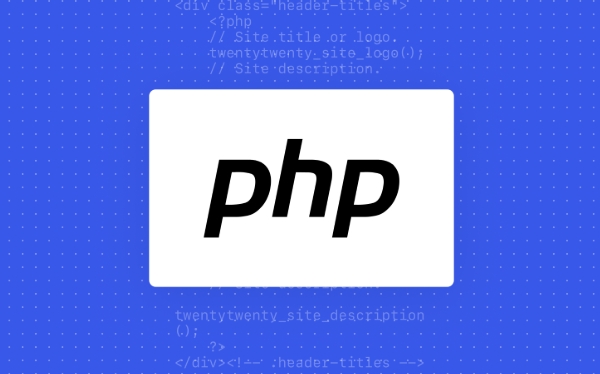 Backend Development
Backend Development
 PHP Tutorial
PHP Tutorial
 How to measure the memory usage of a single PHP function call?
How to measure the memory usage of a single PHP function call?
How to measure the memory usage of a single PHP function call?
Jul 12, 2025 am 02:12 AMTo measure memory usage of a single PHP function call, use the memory_get_usage() and memory_get_peak_usage() functions. 1. Use memory_get_usage() to obtain the memory difference before and after function execution to calculate the actual increased memory usage; 2. Use memory_get_peak_usage() to obtain the maximum memory peak during function execution, including temporarily allocated memory; 3. For more in-depth analysis, enable Xdebug extension to generate performance analysis files, and combine tools such as KCacheGrind to view detailed memory and time consumption, but it should be noted that Xdebug is only applicable to development environments and should not be enabled in production environments.

To measure the memory usage of a single PHP function call, you can use built-in PHP functions like memory_get_usage() and memory_get_peak_usage() . These functions allow you to track how much memory your script is using at different points in time. The general idea is to take a memory snapshot before and after the function call to calculate the difference.

Use memory_get_usage() for basic tracking
This function returns the amount of memory, in bytes, that's currently being allocated to your PHP script. To get the memory used by a specific function, you'd typically do something like this:

$startMemory = memory_get_usage(); yourFunctionHere(); $endMemory = memory_get_usage(); echo 'Memory used: ' . ($endMemory - $startMemory) . ' bytes';
- Make sure not to run other code between the two calls, or it will skew the result.
- This method gives you the increase in memory from the start to end of the function.
- It doesn't account for garbage collection or temporary spikes during execution.
Check peak memory with memory_get_peak_usage()
If you're interested in the maximum amount of memory used during the function's execution (including any temporary allocations), use memory_get_peak_usage() :
$startPeak = memory_get_peak_usage(); yourFunctionHere(); $endPeak = memory_get_peak_usage(); echo 'Peak memory used: ' . ($endPeak - $startPeak) . ' bytes';
- This is useful when a function may allocate large temporary data structures that are later freed.
- Keep in mind that this value includes everything allocated during the function's run, not just what's retained afterward.
Consider enabling Xdebug for more detailed analysis
For deeper profiling — especially if your function calls other functions or uses complex logic — consider using Xdebug , a powerful PHP extension for debugging and profiling.

- Xdebug can generate cachegrind files that you can open in tools like KCacheGrind or WinCacheGrind to see exactly how much memory (and time) each function call takes.
- Enable it by setting
xdebug.mode=profilein your php.ini and configure the output directory withxdebug.output_dir. - Once enabled, calling your function via the web or CLI will generate a profile file showing full stack memory and timing details.
Just keep in mind:
- Xdebug adds overhead, so don't enable it on production servers.
- It's best suited for development and troubleshooting performance issues.
Basically that's it. Using a combination of built-in functions and profiling tools like Xdebug should give you a solid understanding of how much memory a specific PHP function consumes during its execution.
The above is the detailed content of How to measure the memory usage of a single PHP function call?. For more information, please follow other related articles on the PHP Chinese website!

Hot AI Tools

Undress AI Tool
Undress images for free

Undresser.AI Undress
AI-powered app for creating realistic nude photos

AI Clothes Remover
Online AI tool for removing clothes from photos.

Clothoff.io
AI clothes remover

Video Face Swap
Swap faces in any video effortlessly with our completely free AI face swap tool!

Hot Article

Hot Tools

Notepad++7.3.1
Easy-to-use and free code editor

SublimeText3 Chinese version
Chinese version, very easy to use

Zend Studio 13.0.1
Powerful PHP integrated development environment

Dreamweaver CS6
Visual web development tools

SublimeText3 Mac version
God-level code editing software (SublimeText3)

Hot Topics
 php regex for password strength
Jul 03, 2025 am 10:33 AM
php regex for password strength
Jul 03, 2025 am 10:33 AM
To determine the strength of the password, it is necessary to combine regular and logical processing. The basic requirements include: 1. The length is no less than 8 digits; 2. At least containing lowercase letters, uppercase letters, and numbers; 3. Special character restrictions can be added; in terms of advanced aspects, continuous duplication of characters and incremental/decreasing sequences need to be avoided, which requires PHP function detection; at the same time, blacklists should be introduced to filter common weak passwords such as password and 123456; finally it is recommended to combine the zxcvbn library to improve the evaluation accuracy.
 How to combine two php arrays unique values?
Jul 02, 2025 pm 05:18 PM
How to combine two php arrays unique values?
Jul 02, 2025 pm 05:18 PM
To merge two PHP arrays and keep unique values, there are two main methods. 1. For index arrays or only deduplication, use array_merge and array_unique combinations: first merge array_merge($array1,$array2) and then use array_unique() to deduplicate them to finally get a new array containing all unique values; 2. For associative arrays and want to retain key-value pairs in the first array, use the operator: $result=$array1 $array2, which will ensure that the keys in the first array will not be overwritten by the second array. These two methods are applicable to different scenarios, depending on whether the key name is retained or only the focus is on
 PHP Variable Scope Explained
Jul 17, 2025 am 04:16 AM
PHP Variable Scope Explained
Jul 17, 2025 am 04:16 AM
Common problems and solutions for PHP variable scope include: 1. The global variable cannot be accessed within the function, and it needs to be passed in using the global keyword or parameter; 2. The static variable is declared with static, and it is only initialized once and the value is maintained between multiple calls; 3. Hyperglobal variables such as $_GET and $_POST can be used directly in any scope, but you need to pay attention to safe filtering; 4. Anonymous functions need to introduce parent scope variables through the use keyword, and when modifying external variables, you need to pass a reference. Mastering these rules can help avoid errors and improve code stability.
 How to handle File Uploads securely in PHP?
Jul 08, 2025 am 02:37 AM
How to handle File Uploads securely in PHP?
Jul 08, 2025 am 02:37 AM
To safely handle PHP file uploads, you need to verify the source and type, control the file name and path, set server restrictions, and process media files twice. 1. Verify the upload source to prevent CSRF through token and detect the real MIME type through finfo_file using whitelist control; 2. Rename the file to a random string and determine the extension to store it in a non-Web directory according to the detection type; 3. PHP configuration limits the upload size and temporary directory Nginx/Apache prohibits access to the upload directory; 4. The GD library resaves the pictures to clear potential malicious data.
 Commenting Out Code in PHP
Jul 18, 2025 am 04:57 AM
Commenting Out Code in PHP
Jul 18, 2025 am 04:57 AM
There are three common methods for PHP comment code: 1. Use // or # to block one line of code, and it is recommended to use //; 2. Use /.../ to wrap code blocks with multiple lines, which cannot be nested but can be crossed; 3. Combination skills comments such as using /if(){}/ to control logic blocks, or to improve efficiency with editor shortcut keys, you should pay attention to closing symbols and avoid nesting when using them.
 How Do Generators Work in PHP?
Jul 11, 2025 am 03:12 AM
How Do Generators Work in PHP?
Jul 11, 2025 am 03:12 AM
AgeneratorinPHPisamemory-efficientwaytoiterateoverlargedatasetsbyyieldingvaluesoneatatimeinsteadofreturningthemallatonce.1.Generatorsusetheyieldkeywordtoproducevaluesondemand,reducingmemoryusage.2.Theyareusefulforhandlingbigloops,readinglargefiles,or
 Tips for Writing PHP Comments
Jul 18, 2025 am 04:51 AM
Tips for Writing PHP Comments
Jul 18, 2025 am 04:51 AM
The key to writing PHP comments is to clarify the purpose and specifications. Comments should explain "why" rather than "what was done", avoiding redundancy or too simplicity. 1. Use a unified format, such as docblock (/*/) for class and method descriptions to improve readability and tool compatibility; 2. Emphasize the reasons behind the logic, such as why JS jumps need to be output manually; 3. Add an overview description before complex code, describe the process in steps, and help understand the overall idea; 4. Use TODO and FIXME rationally to mark to-do items and problems to facilitate subsequent tracking and collaboration. Good annotations can reduce communication costs and improve code maintenance efficiency.
 How to create an array in php?
Jul 02, 2025 pm 05:01 PM
How to create an array in php?
Jul 02, 2025 pm 05:01 PM
There are two ways to create an array in PHP: use the array() function or use brackets []. 1. Using the array() function is a traditional way, with good compatibility. Define index arrays such as $fruits=array("apple","banana","orange"), and associative arrays such as $user=array("name"=>"John","age"=>25); 2. Using [] is a simpler way to support since PHP5.4, such as $color





